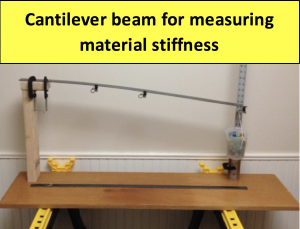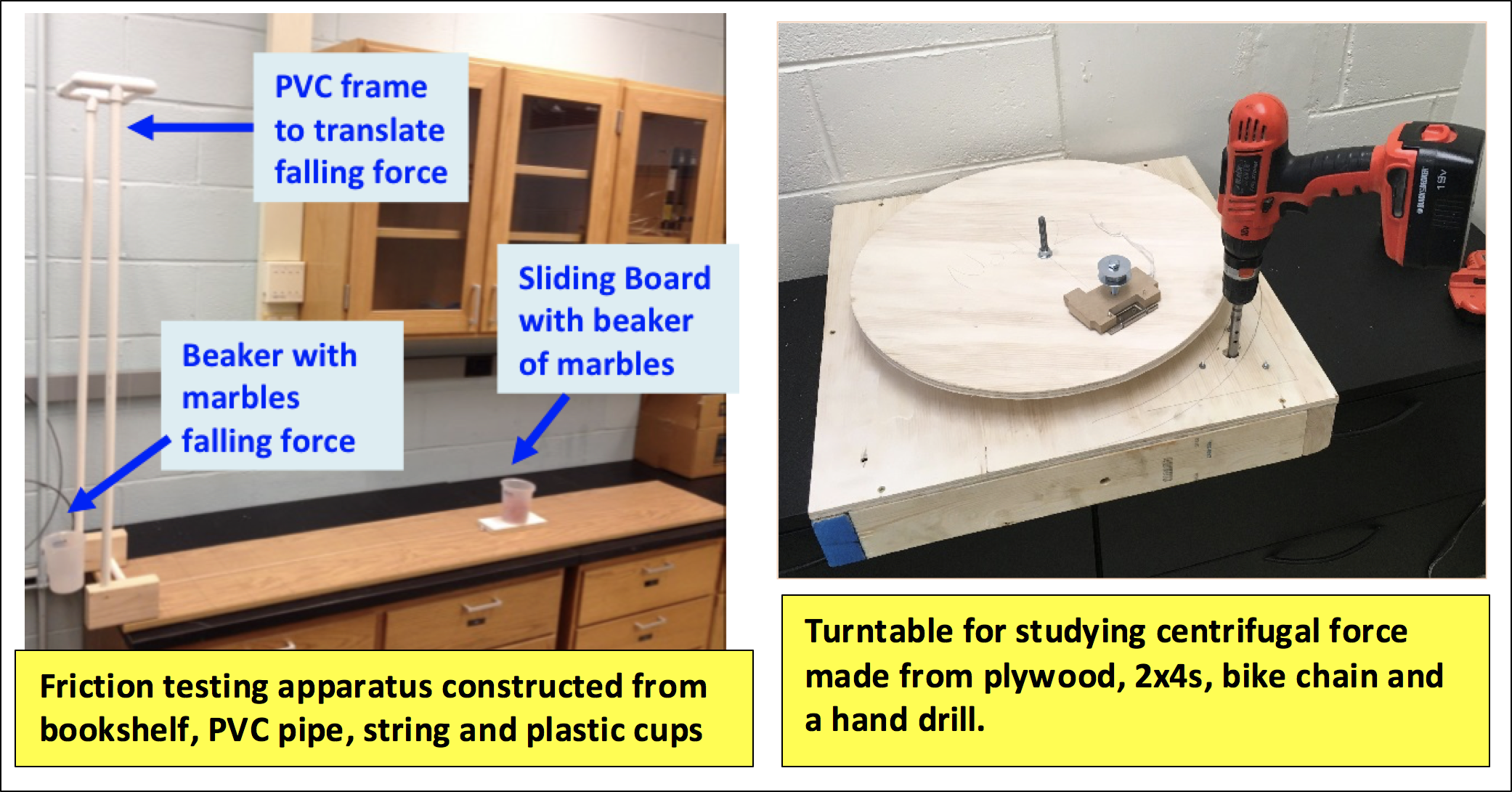As a compliment to the evGrandPrix go-kart education program, the Motorsport-STEM (M-STEM) team has begun developing a series of hands-on experiments for the traditional high school physical science classroom. A key challenge in teaching high school and middle school science is motivating students – an especially challenging task when much of science education is book/blackboard learning of abstract concepts that are at best weakly connected to real world examples. There is no such problem in motivating students to participate in the evGrandPrix electric go-kart program. Thus, we are now deconstructing the various technologies in a vehicle in order to connect them to the standard collection of concepts taught in physical science. We believe that almost all of physical science can be connected to vehicle technology, thereby providing a real world motivation for learning.
A second challenge is to introduce experiments into physical science, since students learn much better by doing vs. passively listening. Often high school science experiments just illustrate a phenomena already presented in the textbook and they typically use a premade experimental apparatus. This is not the way that real science is done – the scientist builds their own apparatus (or at a minimum modifies an existing piece of equipment) and then the experiment is used to explore ideas that are in the process of being formulated. In order to address this challenge, a series of ‘hardware store’ science experiments are being developed. The key idea behind this approach is that top notch science can be done with common materials – all that it requires in some ingenuity and practical making skills.
As one example consider a cantilever beam experiment,  where the student make the supporting structure from wood and screws and use a ruler to measure beam deflection as a function of the applied load and the distance from the support. The students are taught how to do one experiment and analyze that data using the necessary mathematics. Then, the students are asked a series of ‘what-if’ questions. What happens for a thicker beam? How does steel respond vs. aluminum? Why are girders in bridges and skyscrapers made from I-beams? What question would you (i.e. the student) think would be interesting? These inquiry questions are what a real scientist does – not just read what is already known.
where the student make the supporting structure from wood and screws and use a ruler to measure beam deflection as a function of the applied load and the distance from the support. The students are taught how to do one experiment and analyze that data using the necessary mathematics. Then, the students are asked a series of ‘what-if’ questions. What happens for a thicker beam? How does steel respond vs. aluminum? Why are girders in bridges and skyscrapers made from I-beams? What question would you (i.e. the student) think would be interesting? These inquiry questions are what a real scientist does – not just read what is already known.
A suite of these ‘hardware store’ science experiments is being developed to explore the full range topics covered in a high school physical science course. Experiments have already been developed for exploration of work, mechanical energy storage, potential/kinetic energy, static/dynamic friction, center of gravity, material stiffness and centrifugal force. Additional experiments involving mechanics, electricity, chemistry and optics are planned. The unifying concepts for all these experiments are that the students should be able to (i) build their experimental apparatus from common materials and (ii) explore a variety of questions – some posed by the teacher and some which they pose.

Some of the ‘hardware store’ experiments focus on only a single phenomenon, but others are concerned about the interplay between two or more phenomena. The interplay between two different physical phenomena is the heart of engineering, where complex devices are analyzed as the interaction between simple devices. As an example, consider a race car turning the corner at a high rate of speed , where the centrifugal force interplays with the center-of-gravity of the car (which depends upon the wheelbase and distribution of mass). Using the centrifugal force turntable that the students have constructed and a toy car connected to the turntable via a hinge, the students can explore the question: at what angular speed will the car flip? There are a myriad of other engineering questions that the students can explore with the centrifugal force turntable – all with an apparatus that they built.
Finally, today’s young people know how to use a smart phone, social media and a computer, but most of them have never built anything with their hands. Yet, an important career pathway for many students will require the ability to make things. An important component of the ‘hardware store’ science experiments is the introduction of basic making skills with hand tools. We believe that this is an important component of STEM education for all students – those that may pursue a BS degree in engineering, science or business but also student with a non-university degree career pathway towards a rewarding job in the manufacturing industries that need a STEM enabled workforce.